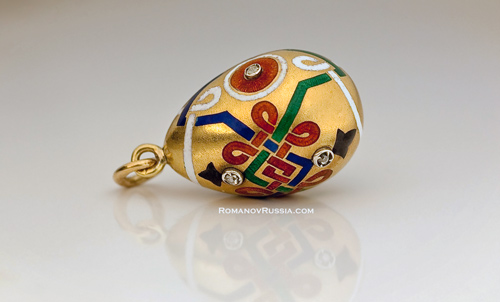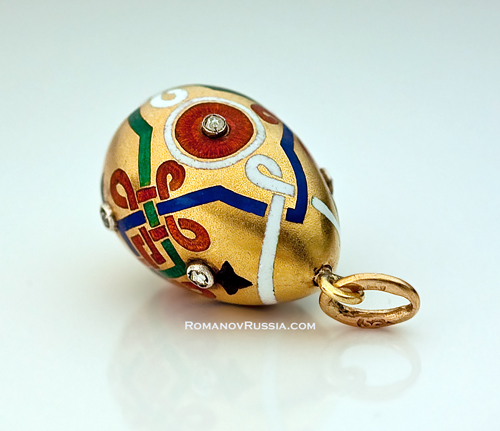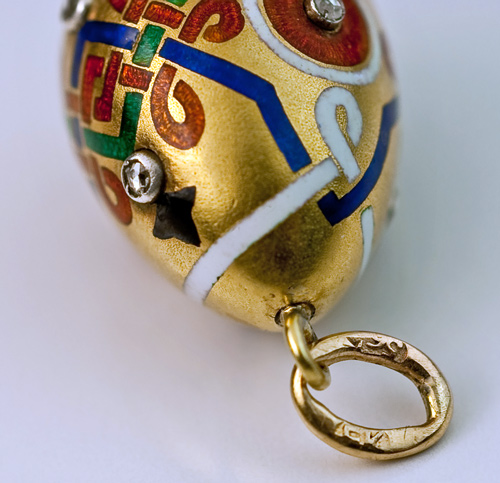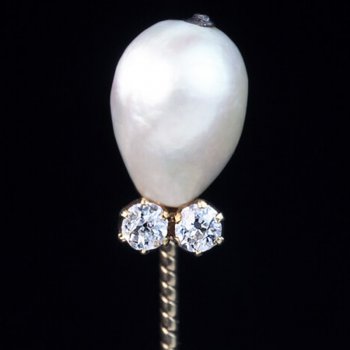A Superb Carl Faberge Gold and Enamel Egg Charm in the Russian Revival Style of the 1870s-1880s
St. Petersburg, circa 1885
56 zolotniks matte yellow gold (14K-583), guilloche and champleve enamels, rose-cut diamonds
One of the major publications which inspired the Russian Revival, was Victor Butovsky’s Histoire de l’Ornement Russe du Xe au XVIe Siecle d’apres les Manuscrits published in 1870. The book reproduced hundreds of Russian medieval ornaments, and revived a great interest in ancient Russian decorative art. In the years that followed the publication, all major Russian jewelry and silversmith firms started experimenting with ancient enameling techniques. In the 1870-1880s, champleve enamel medieval-style designs were especially popular.
The design of this miniature gold egg was clearly inspired by motifs of medieval Russia
Height (without suspension ring) – 20 mm (3/4 in.)
The suspension ring is struck with 56 zolotniks gold standard mark (after 1882) and initials ‘E K’ for Faberge head workmaster of that period – Erik Kollin (1836-1901), who specialized in Revivalist gold objects. The smaller ring is stamped with 56 gold mark, of which only ‘5’ is visible.
The blue, orange, and green are translucent enamels, which were applied over an engine-turned ground. The white and black are opaque enamels.
Enamel work is very elaborate, considering the small size of the egg.
Champlevé is an enameling technique, in which decorations are carved into the surface of a metal object and filled with enamel (glass powder). The piece is then fired until the enamel melts, and after cooling, the surface is polished.
The width of the colored stripes is only 1 mm (1/25 in.). It would require a great skill to engine-turn the bottom of those tiny carved channels with a zig-zag pattern.






